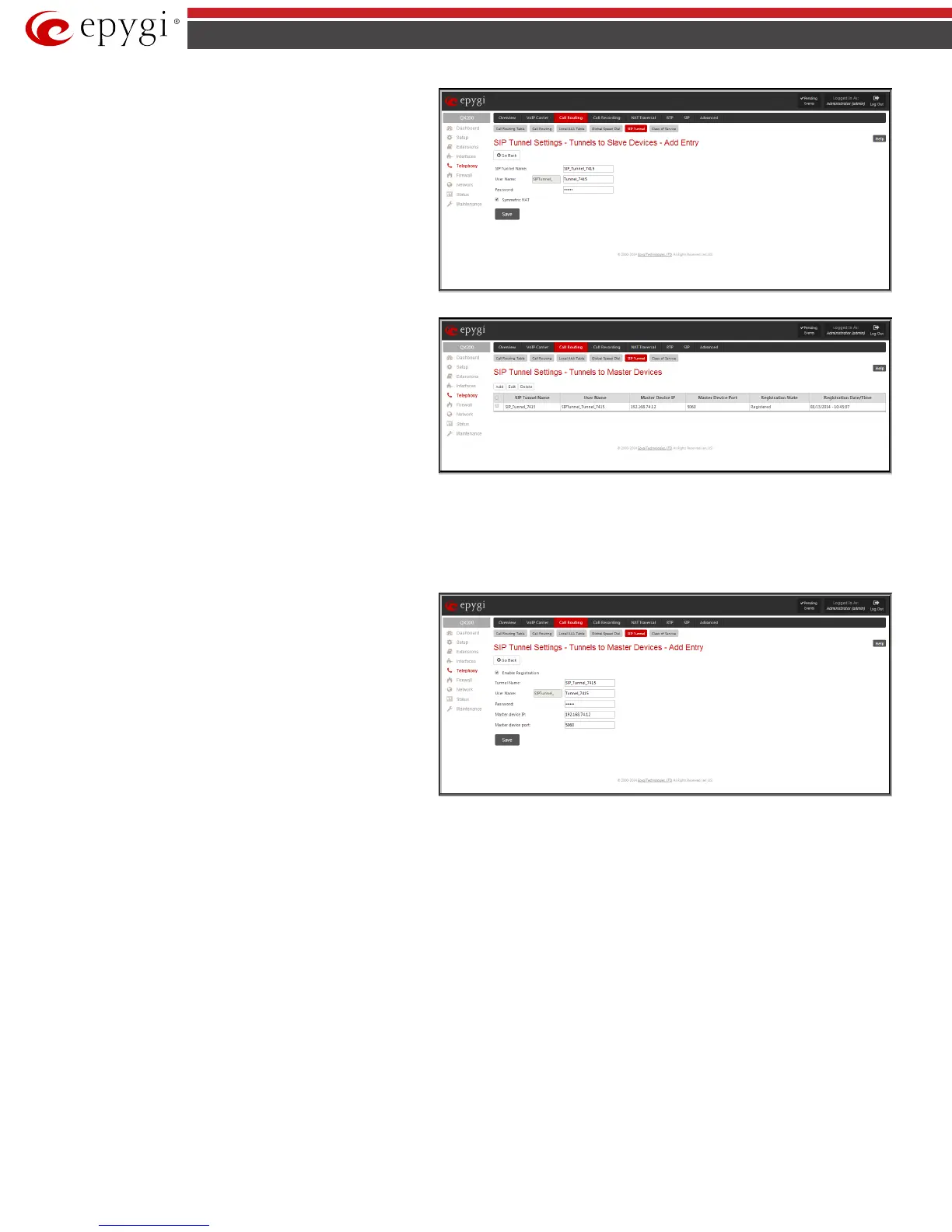QX50/QX200/QX2000; (SW Version 6.0.x) 106
QX50/QX200/QX2000 Manual II: Administrator’s Guide
Password
text field requires the authentication password.
Please Note: The User Name and Password should match both
on master and slave QX IP PBXs for the successful SIP tunnel
establishment.
The Symmetric NAT checkbox should be selected when the slave
QX IP PBX is located behind the symmetrical NAT.
Fig.II- 151: SIP Tunnel Settings – Tunnels to Slave Devices – Add Entry page
Enable Tunnels to Master Devices
checkbox enables the QX
IP PBX as a slave device and allows connecting to the master QX IP
PBX via SIP tunnel. When this checkbox is enabled the Tunnels to
Master Devices table needs to be configured.
The link Tunnels to Master Devices moves you to the page where
a list of master devices needs to be defined.
Fig.II- 152: SIP Tunnel Settings – Tunnels to Master Devices page
The Tunnels to Master Devices page consists of a table where master devices are listed with the corresponding authentication parameters.
Add functional button leads to the Add Entry page where a new master device parameters needs to be provided.
Add Entry
page consists of the following components:
The Enable Registration checkbox selection is used to enable the
registration to the corresponding master device.
The Tunnel Name text field requires the SIP tunnel name for the
corresponding connection. System suggests you to start the SIP
tunnel name with the “SIP_Tunnel_” words, according to the
automatic prefix used for the SIP tunnels on the QX IP PBX,
however this is not mandatory.
The User Name text field requires the authentication user name.
The field in front of this text field displays the default non-editable
prefix for SIP tunnels: “SIPTunnel_”.
The Password text field requires the authentication password.
Please Note: The User Name and Password should match both
on master and slave QX IP PBXs for the successful SIP tunnel
establishment.
Fig.II- 153: SIP Tunnel Settings – Tunnels to Master Devices – Add Entry page
The Master device IP text field requires the IP address of the master device.
The Master device port text field requires the SIP port number of the master device.
The Registration State field displays information whether the slave device is registered on the master or not.
The Registration Date/Time field displays the time and the date of last registration on the master’s device.
Class of Service
The current implementation of Class of Service (CoS) on QX IP PBX is used to define the permissions that PBX and Conference extensions will have when
using call routing rules to make a call.
The Class of Service feature provides the ability to set restrictions on the call routing rules for each extension. The Class of Service functionality allows to
permit or deny the attempt of extensions to use certain types of call routing rules.
Suppose you want for a certain group of PBX/Conference extensions to deny the right to make international calls, but allow them to make local and long
distance calls and for another group of PBX/Conference extensions give a permission to make international calls only.
Class of Service allows to specify which extensions can use which routing rules to make a call.

